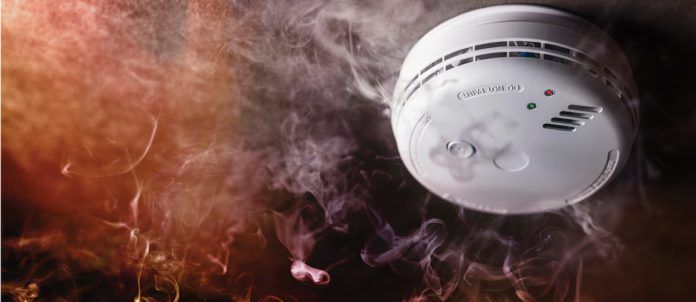Fire-suppression and detection systems are critical to an overall fire-safety plan. But there’s more to building a fire-safety program than meets the eye — from system installation to maintenance to staff training.
“Many restaurants tend to overlook kitchen equipment when it comes to safety,” says Sal Fuci, service technician with Pro-Tech Fire Inc. in Toronto. “If you run a restaurant, the most hazardous thing is your cooking equipment.”
Getting started
Whether occupying a new building or installing a system in an existing property, it’s important to understand the fire codes for your area — or find someone that does. “The Canadian National Fire Code sets high-level standards,” says Colin Greenhalgh, Business Development manager, Western Canada Fire Protection in Victoria, B.C. “Then it’s up to each province to decide how and when to adopt what editions. The closer you are to metropolitan areas, the more you can expect to see additional codes.”
Restaurant owners are required to bring qualified technicians in to install, service and maintain fire-suppression and detection systems, says Greenhalgh, adding “It’s critical to find a reputable company with certified technicians.”
Every outcome from an inspection should be a certified result, stresses Fuci. “If you don’t have inspections done on time, you could be liable for any kind of damages from the fire.”
Maintenance and servicing must be conducted at the proper intervals as determined by the appropriate codes, says Greenhalgh. The business owner may be responsible for maintaining their systems, or in the case of a lease, the landlord.
“If you’re a tenant, typically the owner of the building is responsible for maintenance, but that does depend on the lease/tenant agreement so be sure to check.”
The parts in play
Fire-protection systems include fire-detection equipment (smoke/heat detectors and alarms) and suppression systems (including extinguishers). Additional considerations are exit signage and emergency lighting.
Once the system is triggered, most kitchens will have a gel-based grease-suppression system around the heat-generating appliances that is dispersed through nozzles. As such, restaurants must have a system with proper nozzle protection that is able to properly cut off any fuel source, says Fuci.
Most ventilation hoods, which are a key cause of kitchen fires, have built-in automated nozzle protection. Kitchens are also required to have manual pull stations beside cooking surfaces that use the same extinguisher, pressurization and discharge nozzles as the automated system.
Fire extinguishers are rated for specific classes, explains Phillip Bott, division chief, Fire and Emergency Services Training Institute (FESTI) in Toronto. “Extinguishing systems are very different. In normal kitchen operations, you want a clean agent spray on top of burners and fryers. Kitchens specifically require K-Class fire extinguishers. Multi-purpose extinguishers (Class A, B and C) are generally used for front-of-house or storeroom areas. The Fire Code will determine how many extinguishers are required and their size.”
“In some cases, you might have up to three different types of extinguishers so it’s very important staff know which one to use on which type of fire,” says Greenhalgh.
While not used around kitchen grills, sprinkler systems can be deployed in back areas, freezers, offices, prep areas, along with some version of heat/smoke detectors, he adds.
Greenhalgh notes that maintaining your equipment between visits can help prolong the life of your equipment. “Proactive maintenance according to manufacturers’ recommendations literally delivers a three-to-one ratio saving,” says Greenhalgh. “It’s like a car. If you maintain it the way the manufacturer tells you to, you can extend its life for years.”
Training Tips
“The ideal situation is if staff are trained to catch something before your fire-suppression system kicks in,” says Greenhalgh.
Training is typically provided by the fire-protection company after installation. Restaurants can also contact a fire-training facility. Some will provide electronic-simulation technology using lasers. Others may get you to deploy and fight a real fire, says Bott.
Following are some additional on-site training tips:
- Familiarize staff with the locations of the fire exits and evacuation procedures.
- Conduct regular fire drills and designate stand by locations in the event of an evacuation.
- Designate a person to be accountable for ensuring everyone has exited the building safely.
- Assign a person per shift that is trained in fire safety and is responsible for surveying each zone (e.g., hostess in the dining-room, chef in the kitchen area).
- Retrain staff annually.
- Finally, don’t cheap out, says Greenhalgh.
Fire safety is one area where restaurants can’t afford to cut corners. “The benefits far outweigh the costs in every case. It just takes one disaster.”
By Denise Deveau


















